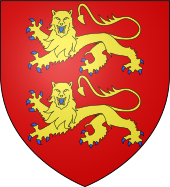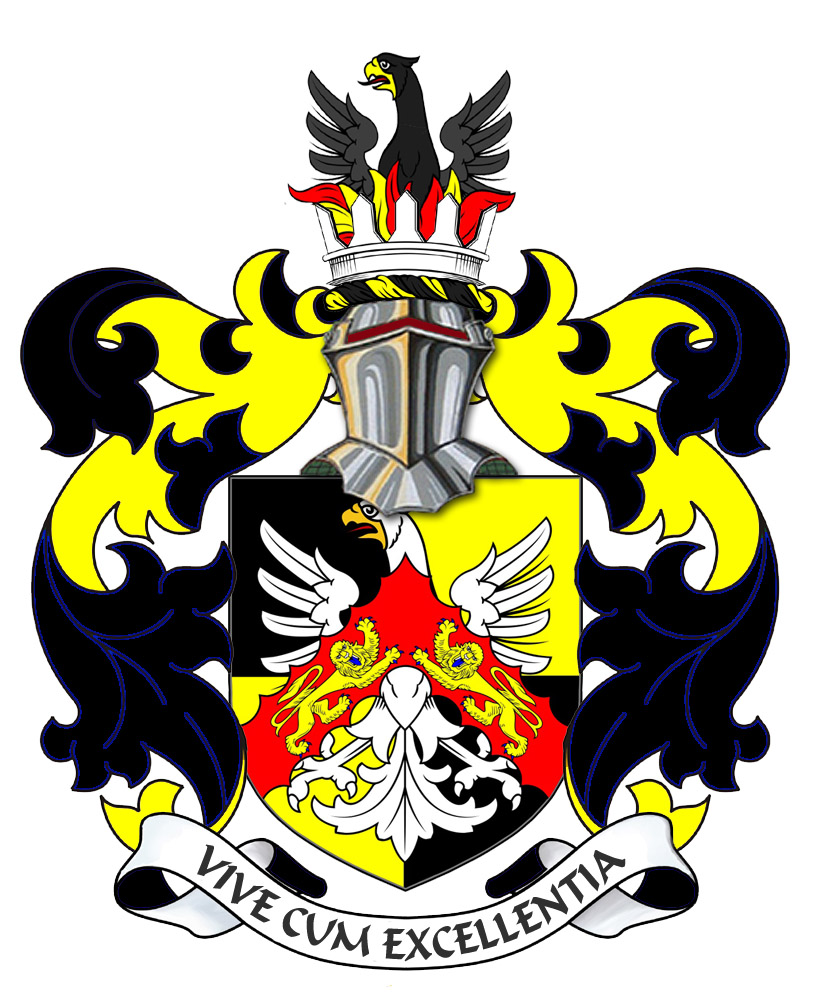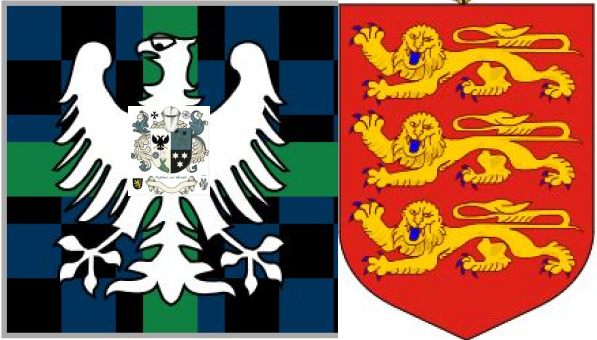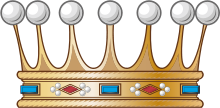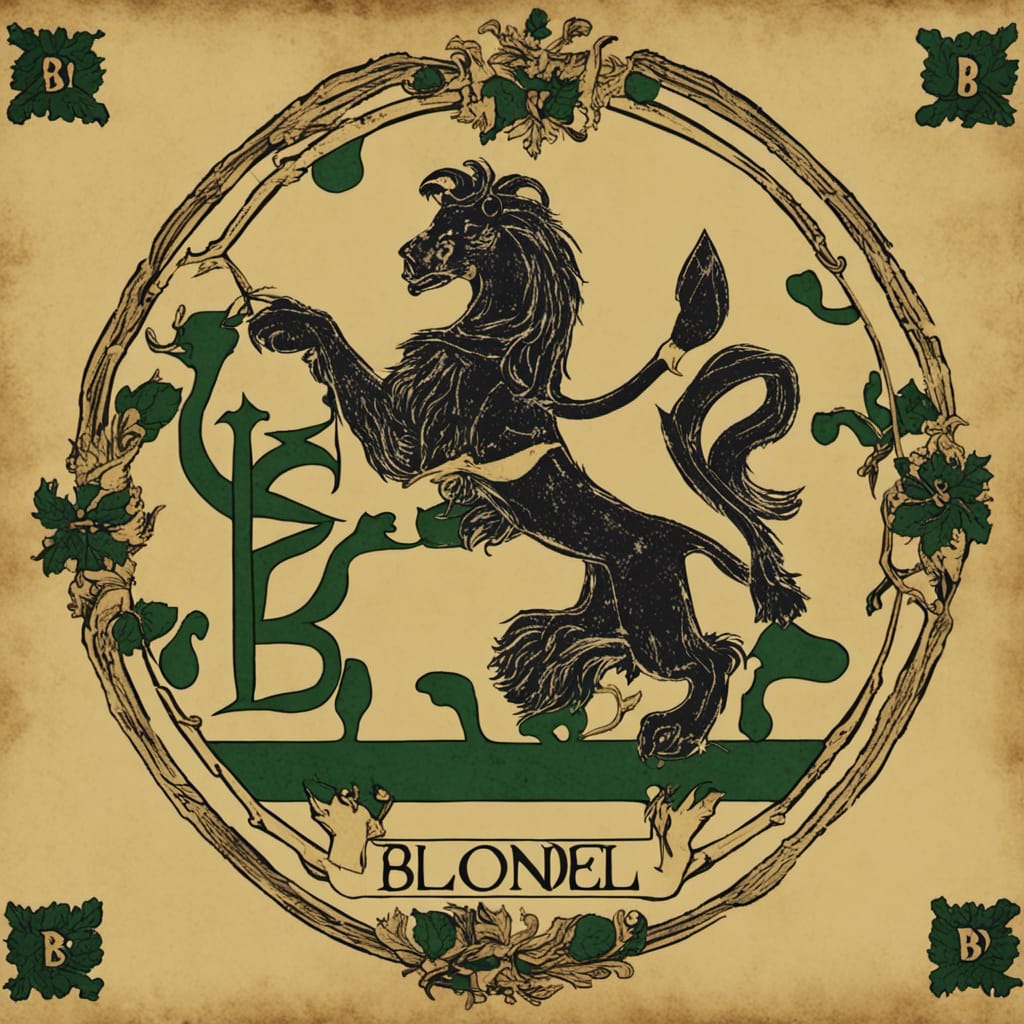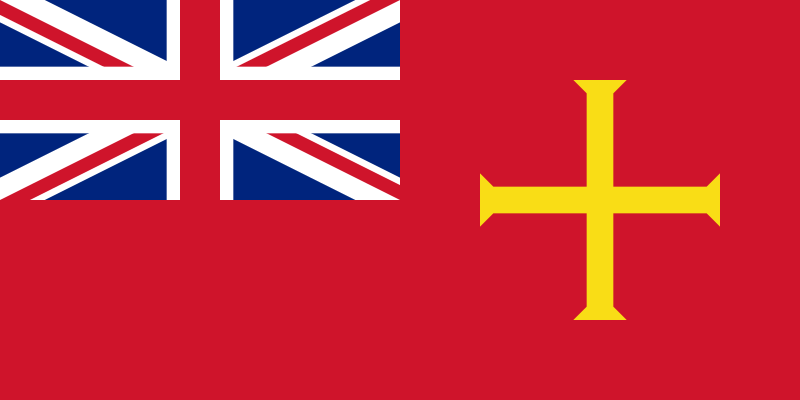|
THE ANGLO-NORMAN
ISLANDS |
|
|
|
|
|
GUERNESEY |
|
|
|
|
|
|
|
|
|
|
|
|
|
|
|
|
|
|
|
|
|
|
|
The Bailiwick of Guernsey is a dependency of the British crown in the English Channel off the
French coast.
In addition to the island of Guernsey itself, it also includes Alderney, Sark, Herm, Jéthou,
Brecqhou, Burhou and other small islands.
Together with Jersey, they form the archipelago known as the Channel
Islands.
Guernsey translates to "Guernsey" in English.
The Jersey people call the Guernsey “donkeys” or “donkeys” according to their language and the
latter in turn call them “toads”, because this animal does not exist in Guernsey.
Guernsey has an area of 62 km².
|
|
 |
|
|
|
|
|
|
|
|
|
The landscapes are contrasted there.
Bordered by cliffs on the south coast (altitude 100 m) the island gradually sinks as one gets
closer to the north coast.
The spectacular and jagged landscapes of the south coast give way to meadows and hilly woods of the
interior, while to the north, the low and sandy coast is indented with well sheltered
bays.
Its capital, Saint Peter Port, is one of the liveliest and most picturesque cities of the
archipelago. It is in this city that Victor Hugo lived in exile from October 31, 1855 to August 15,
1870. He will return there three times , in 1872 where there was one year left, one week in April
1875, and almost four months in 1878.
|
|
|
|
|
|
|
|
|
|
COAT OF ARMS
The
coat of arms of Guernsey
, like that of Jersey, is made up of the coat of arms of England and that of
Normandy.
This coat of arms, unlike the others, incorporates a small branch at its top.
It is composed of a field of gules, in which appear three lions (or leopard in heraldry) of gold
and armed with azure.
Above is a small gold branch.
The arms are those of the Kingdom of England.
They are identical to those used by Jersey (with the exception of the small gold branch on the arms
of Guernsey).
Although in use since 1290, the use of the royal arms by the Channel Islands was accepted in 1907,
but never officially granted
FLAG
The
flag of Guernsey
, a dependency of the British Crown, was adopted on May 9, 1985, on the 40 th
anniversary of the liberation of the island.
Originally, the flag of Guernsey consisted simply of the cross of Saint
George.
Mention is made of this flag from 1936. However, there was some confusion between this and that of
England.
To put an end to it, a committee was formed under the chairmanship of Sir Graham Dorey, deputy
bailiff at the time, who then proposed to continue using the Cross of Saint George, with the
addition of the cross pattée d'or appearing on the standard of William the
Conqueror.
The civilian merchant pavilion
is made up of the Red Ensign with the gold cross on the side.
Companies which are registered and have their registered office on the island may fly the flag of
Guernsey on their vessels, when operating in the waters adjacent to the Channel
Islands.
|
|

|
|
|
|
|
|
|
|
|
|

Flag
|
|
|
|
|
|
|
|
|
|
Merchant pavilion
|
|
|
|
|
|
|
|
|
|
 |
|
|
|
|
|
|
|
HISTORY
During the Bretons' migration to Armorica in the 6th century, they occupied the Channel Islands
(then called the Lenur Islands) which were on their route. At that time, Guernsey was called Lesia.
It was part of the kingdom of Brittany in the 9th century but was subject to Viking incursions from
that time. In the year 933, the King of France gave Avranchin and Cotentin (on which Lesia /
Guernesey depended) to the Duke of Normandy Guillaume Longue-Epée, with the charge of conquering
them.
The island of Guernsey and the other Channel Islands represent the last vestiges of the medieval
Duchy of Normandy, divided since 1204 between England and France That year, the King of France
Philippe-Auguste conquered mainland Normandy, the King of England John Landless retaining the
Channel Islands.
Despite numerous French attempts, Guernsey and its neighbors will remain under the scepter of the
King of England, reigning here under the title of "Duke of Normandy".
These islands were the only dependent territories of the British crown occupied by Germany during
the Second World War and were the scene of Operation Ambassador
|
|
|
|
|
|
|
|
|
|
CASTLE CORNET
THE CORNEILLES CASTLE
The fortifications of this castle are almost eight centuries old. When King John the Landless lost
Normandy to France in 1204, Guernsey chose to remain loyal to the English king. The island
immediately felt threatened by the French and the islanders decided to build Castle Cornet to
protect themselves from it. Construction began in 1206 and lasted almost 20 years. During the
Hundred Years War, the French and the English fought for it bitterly and it passed from hand to
hand several times, after fierce battles.
As military techniques progressed, the castle was constantly reinforced and modified. During the
civil war that tore England apart, the governor of Guernsey, Peter Osborne, withdrew there and
challenged the rest of the island which had sided with Cromwell. The castle had to undergo a siege
of nearly 9 years, siege during which it received the very precious support of Jersey, who remained
loyal to its sovereign. More than 100,000 cannon balls were then fired against the
castle.
With the restoration of royalty, it was the jail of Sir John Lambert, former general of Cromwell,
of whom it was feared that he would take over the succession.
But Lambert had become peaceful again, and he occupied his captivity lovingly arranging the gardens
of the castle, which can be visited today.
In 1672 a dramatic accident took place.
During a severe thunderstorm, lightning fell on the ammunition depot, which
exploded.
The blast caused the dungeon to collapse, sweeping away the lodge where Lady Hatton, the governor's
wife was, who died buried.
During the Napoleonic era, for fear of a new attack from the French, Castle Cornet was modernized
and armed with formidable cannons, which ultimately never served.
|
|

Guernsey
Castle
(
Castle Cornet)
|
|
|
|
|
|
|
|
|
|
|
|
|
|
|
|
|
|
|
|
|
|
|
|
|
|
|
|
When hostilities between the English and the French ended, the castle served as an arsenal, prison and
barracks.
Its military function was abandoned until 1940, when the Germans invaded the
island.
They concreted certain parts of the castle in order to integrate it into their defense system, the
Atlantic wall. |
|
|
|
|
|
|
|
POLITICS
The States of Guernsey, officially called the States of Deliberation, are made up of 59 members, of
which 45 are deputies, elected by districts with one or more members every 4 years, and 10 are
parish dozen representing parish authorities.
There are 2 representatives of Alderney and Sark, which are self-governing dependencies of the
bailiwick.
There are also 2 non-voting members - the Attorney General and the Advocate General, both appointed
by the monarch.
Laws passed by states are called 'Ordinances'.
Since 2004 there is a system of ministerial government.
The legal system is derived from Norman and English laws, with justice administered by the Royal
Court.
|
|
|
|
|
|
|
|

|
|
|
|
|
|
|
|
ADMINISTRATION
The island of Guernsey is divided into ten administrative cantons, called
parishes:
Lihou, an island accessible at low tide, is part of the parish of
Saint-Pierre-du-Bois.
|
|
|
|
|
|
|
|
|
|
|
Parishes |
Latin |
|
1 Saint-Pierre-Port |
Villais |
|
2 Le Valle |
Valais |
|
3 Sainte-Marie-du-Câtel |
Câtelains |
|
4 Saint-Samson |
Saint-Samsonnais |
|
5 Saint-Martin-de-la-Bellouse |
Saint-Martinais |
|
6 Saint-Sauveur |
Saint-Sauveurais |
|
7 Saint-André-de-la-Pommeraye |
Saint-Andriais |
|
8 Saint-Pierre-du-Bois |
Saint-Pierrais |
|
9 The Forest |
Forestains |
|
10 Torteval |
Tortevalais |
|
|
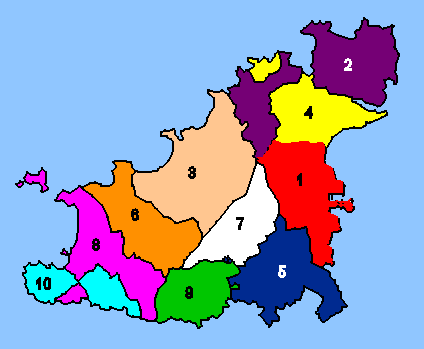 |
|
|
|
|
|
|
|
|
|
THE FEODAL SYSTEM
Without any political or judicial power for several decades, the feudal system of Guernsey has been
maintained to this day. There are officially 75 fiefdoms, at the head of which is a "lord" or a
"lady". The British Crown in the person of the
Duke of Normandy
, Queen Elizabeth II actually owns 29 of its fiefdoms, most of which belonged to
abbeys or to Lower Norman priories, before the
16th
century. This fact, in 2004, there were 24 private lords totaling 46 lordships
inherited from this feudal system.
, except that two of these 46 seigneuries are in joint possession between several
owners.
These fiefdoms belong to very old local lineages which have given rise to numerous officers,
bailiffs, jurats and lawyers.
These few families reunite in their hands, following endogamous marriages, several of the small
rural fiefdoms, resulting from the divisions made over the course of history, according to the
precepts of Norman customary law, still in force.
As in England and according to a centuries-old system, the fiefs can be sold by the lords to other
individuals.
Each lord is required, according to custom, to give evidence and homage to the duke or his
representative.
This tribute is sometimes staged during the Queen's State visits to the Channel
Islands.
Unlike the Lord of Sark, the Gueurnesiais lords only retained the feudal rights, but lost all their
properly seigneurial rights since the
19th
century and in the following. The lords played a social role until the first
half of the
twentieth
century. The feudal courts have also practically disappeared, with the exception
of the courts of the fief Le Comte (Lenfestey family) or the fief of Blanchelande (to the bailiff
of Guernsey,
ex officio
, in Saint-Martin). The seneschal of a fief, and his officers were usually chosen from among the
inhabitants of the fief, as required by feudal customs. In the example of the fief of Blanchelande,
which once belonged to a priory of the former abbey of Blanchelande (in Neufmesnil, France,
Manche), the court of the fief still consists today of the seneschal, four vavasseurs, and officers
who are the clerk and his clerk, the provost, a sergeant and an attic
. In the fiefdoms, this court was held either in a special room or room for plaids, or on a stone
bench located on a main axis of the seigneury. Some of these benches have been
preserved.
The 1980
Feudal Dues Law Act
definitively extinguished the privacy of the remaining seignorial royalties by
transferring them to the benefit of the Crown. In 2002, a complementary law provided for the
abolition in 2003 of the right of "thirteenth" (transfer tax) for the benefit of private lords, due
to the exemption enjoyed by farms held in fiefs and free fiefs (seigneuries). . This tax now goes
to the Crown
.
The lords and ladies of the most important Guernsey fiefs traditionally sit in the Court
of
Chief pleas
, with lawyers practicing on the island and the constables elected from the
parishes, during its solemn sessions "en corps" (or
full court
), ie three times. per year. To sit, the Lords and Ladies must have paid homage
of their fiefdom to the Crown or its representative, the Lieutenant-Governor of Guernsey. However,
even if the presence of the lords and ladies is compulsory at these three sessions, they no longer
oppose the debate but only respond to their name. This survival indicates, however, that the
Guernsey lordships have retained their moral and legal personalities
.
Having become owners of several seigneuries (in English:
manors
), a certain number of seigneurial dwellings have been converted into luxury
hotels (Hôtel de La Barbarie, for the fief of Blanchelande, or the manor of Longueville, in
Saint-Sauveur), or quite simply sold, which customary law allows.
Some lords have maintained the area rich in rare botanical essences, and open it to visitors, such
as the manor of Sausmarez (
Sausmarez Manor
)
.
It still belongs to the family of Sausmarez, one of the oldest on the island along with that of De
Carterets.
A similar situation exists in Jersey.
|
|
|
|
|
|
|
|
GUERNESEY TITLES
EN 1020 Duke Richard II divides Guernsey diagonally in two halves, granting from the south-east to
Néel, Vicomte du Cotentin and from the west to Anchetel, Vicomte du
Bessin.
Le Clos du Valle was apparently wasteland.
The two initial strongholds had some vicissitudes, but at the time of the conquest of England both
returned to the families of the original holders.
Evolution of the Fief of Bessin:
The Fief of Bessin consisting of the Vintaine de L'Epine and the parishes of Castel, Saint-Sauveur
and Saint Pierre-du-Bois, which became Fief Le Comte in 1120 when Ranulf the "Vicomte du Bessin"
was created Count of Chester. 12th century, the fief was divided into sub-fiefs: Fiez Rozel, Fief
Longues, Fief Suart and Fief Sotuas. The Fief San Michel originated from a donation of uncultivable
wasteland to the monastery of that name. After 1204 the fief that Suart divided into two parts, one
has the Crown while the rest was named Reveaux fiefdom. Half of the Suart Fief kept by the Crown
while the other half given to the Revel family led to the emergence of the Fief de Gohiers, Fief de
la Pomare and others.
Agricultural Developments and Sales in the Fief Le Compte originated from new sub-fiefdoms like
Fief Groignet, Fief Carteret, Fief Grantez or Fief Videclin.
Likewise, land transfers from St. Michel represented the Fief Saumarez and the Fief Jean du
Galliard.
Evolution of the Fief du Cotentin:
After the battle in Val Dunes (1047), Duke William II created and granted several ecclesiastical
fiefdoms. From 1144 to 1150 the whole island belonged to Geoffrey d'Anjou. The wasteland of the
Fief du Cotentin as part of Geoffrey's possessions, which became under his son Fief Le Roi. New
sub-fiefdoms arose during the 11th and 12th centuries as Fief Aux Fay and Fief Burons. The Fief Au
Fay took place by the payment of a pair of silver spurs and the Burons Fief by the payment of a
pair of golden ears. Both were combined as the Fief des Eperons (spurs) with the obligation to pay
a pair of vermeil spurs.
After 1204 the Crown obtains certain territories holders of previous Norman form which decided to
pay homage to France, thus losing their island territories. It is at the origin of some strongholds
such as the Fief des Bruniaux, Fief Au Marchant and Fief Hailla. Fief of Sausmarez originated in
Fief Barneville. From St. Martin s and linked to the defense of the church comes Fief de la
Velleresse (velleresse to watch = keep a watch on the coast, having this
obligation)
Stronghold The King originated Stronghold of Rozel formerly held by the Cotentin de Rosel family,
which passed to the Crown in 1204 with the stronghold granted by Duke Guillaume II to the abbey of
Marmoutiers.
Geoffrey d'Anjou established in 1150 when he was developing his plans for the invasion of two
military strongholds De Vaugrat from England and Bruniaux in the parish of St.
Sampson.
Fief Anneville granted by Henry III to Sir William de Cheny in 1248 is also from this
parish.
The evolution of the land in the parish of Torteval is complicated, because although initially in
the Fief du Cotentin, many of its fiefs cover St. Pierre-du-Bois, which is part of the Fief du
Bessin.
The original Fief Au Cannely (granted to the Cherbourg family and, naturally, on the territory of
the Fief du Cotentin) was replaced by several sub-fiefs of marriages and establishments: Fief
Guillot Justice, Fief Janin Besnard, Fief de Thomas Blondel , Fief Bouvée Duquemin, Fief Robert de
Va (or de Ver), Fief Jean du Gaillard (which passed to the Crown at the beginning of the 16th
century), etc. A perplexing overlap of territories thus emerges. In 1248, the distribution of the
fiefs was much as it is today.
The number of fiefdoms in Guernsey has remained unchanged since the 14th
century.
The titles were kept in some cases the same years families (Sausamez).
All 75 Lordships are fully documented;
This is not the case with the other titles of the Channel Islands.
In January 2004, 24 private Lords hold 46 Lordships which means that some Lords hold more than one
title.
Two more Seigneures (Riviere and Beuval) are owned by more than one person and the fiefdoms of 27
others belong to the Crown.
The title is transferred by means of transport.
The transfer must be in accordance with Guernsey practices.
This means that the will or conveyance must be made in accordance with Guernsey
Law.
The document is registered with the HM Registry
|
|
|
|
|
|
|
|
|
|

|
|
|
|
|
|
|
|
|
|
VICTOR HUGO
On August 5, 1852, Victor Hugo arrived in Jersey and settled there.
In 1853, he published the Punishments.
The 98 poems of the Punishments describe his anger and his indignation following the coup d'état of
Louis-Napoleon Bonaparte.
In October 1855, the Jersey authorities expelled Victor Hugo.
He leaves Jersey for Guernsey, an island smaller and wilder than Jersey.
For fifteen years, Victor Hugo will remain in exile, writing satires against the one he calls
"Napoleon the little one".
|
|
|
|
|
|
|
|
|
|
But it was also the time when he produced his greatest works: The Contemplations, The Legend of the
Centuries and The Miserables.
In April 1856, publication of Contemplations.
With his copyright, he bought Hauteville-House, a large house overlooking the
sea.
In December, Adèle, her daughter, who has difficulty in this exile, falls seriously
ill.
At the end of June Victor Hugo fell seriously ill.
For more than a month he has to keep the room.
He did not come out, very weakened, for the first time until August 4th.
In August 1859, Napoleon III granted amnesty to republican outlaws.
Victor Hugo, however, refuses to return to France.
In September, he published The Legend of the Centuries.
In March 1861, for the first time, he left Guernsey to go to Belgium.
He finishes Les Misérables.
In September he returned to Guernsey without his son Charles, who preferred to stay on the
continent.
1865, Victor Hugo leaves Guernsey to settle in Brussels.
He will return to Guernsey once again that year
|
|

Victor Hug
o in exile in the islands
Anglo-normans
|
|
|
|
|
|
|
|

|
|
|
|
|
|
|
|
|


